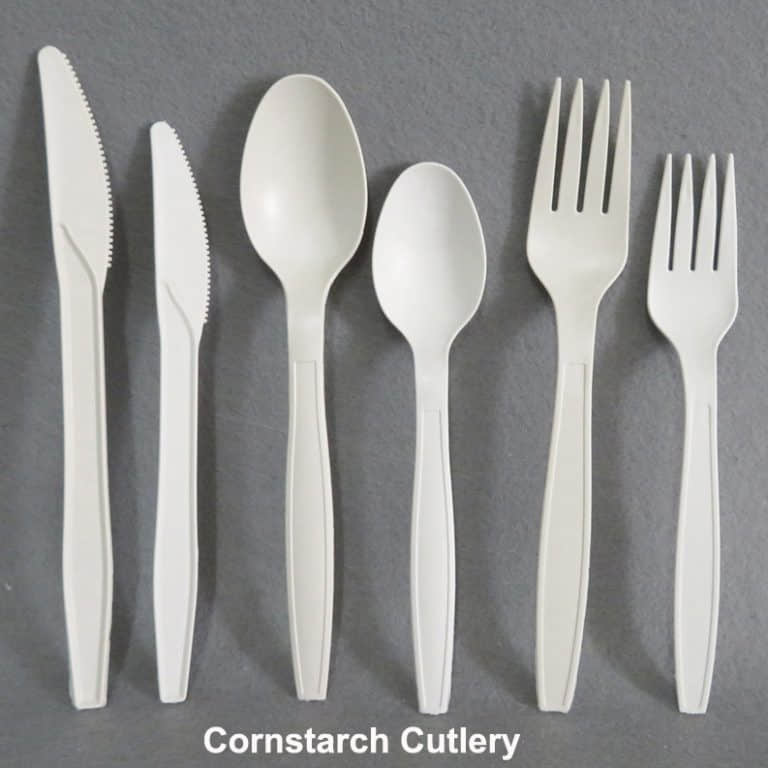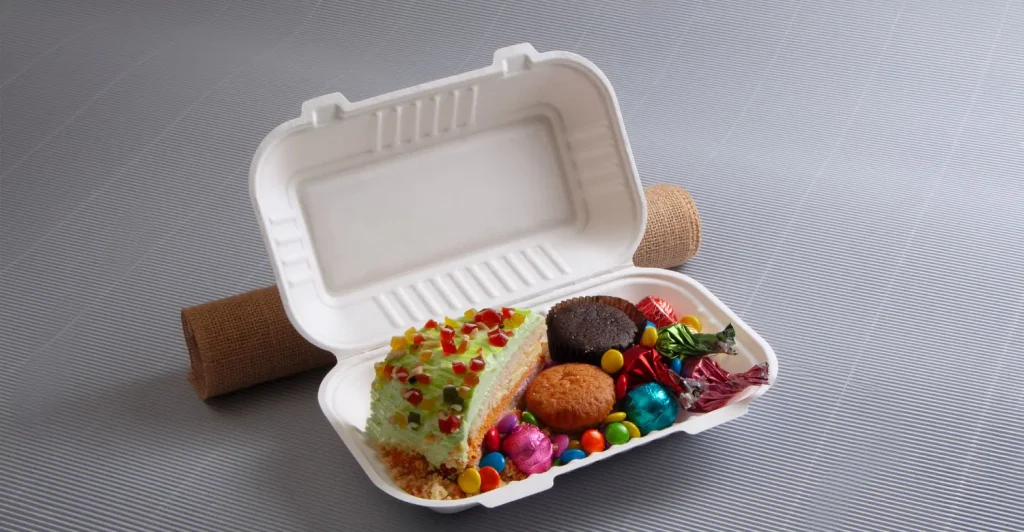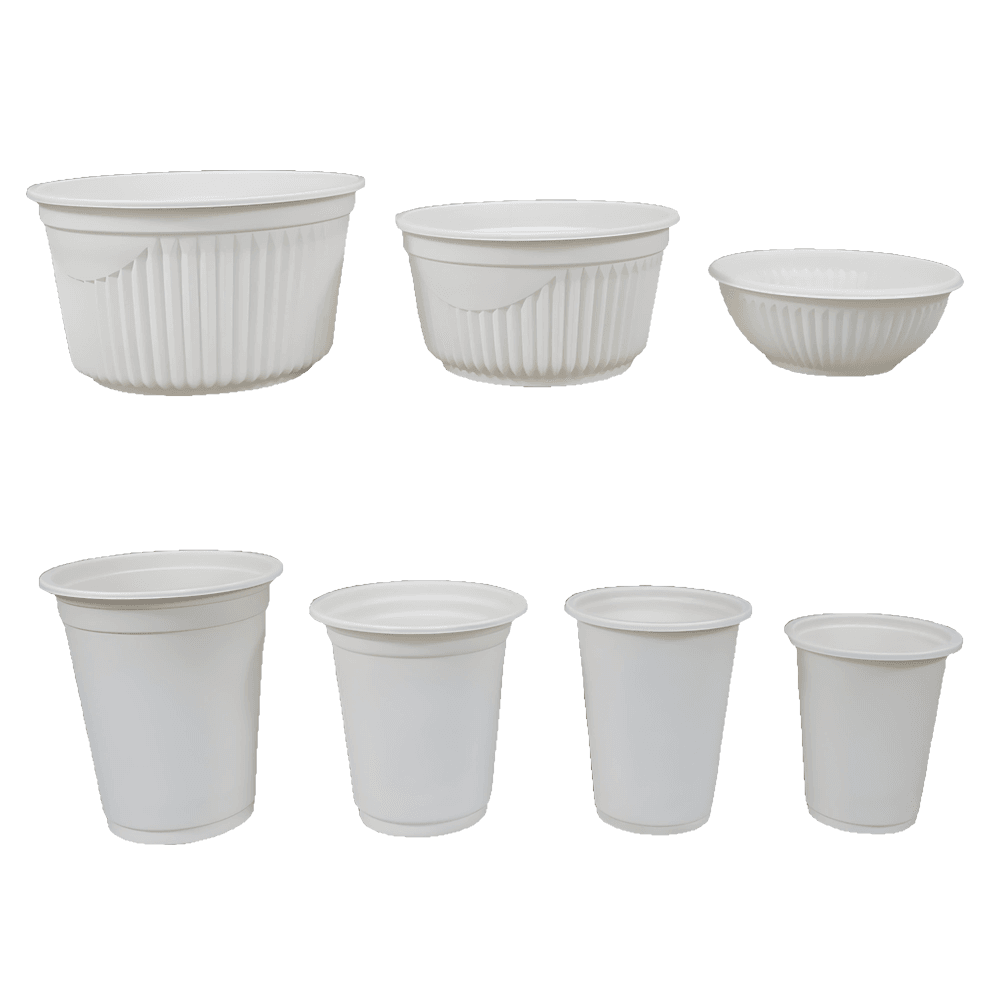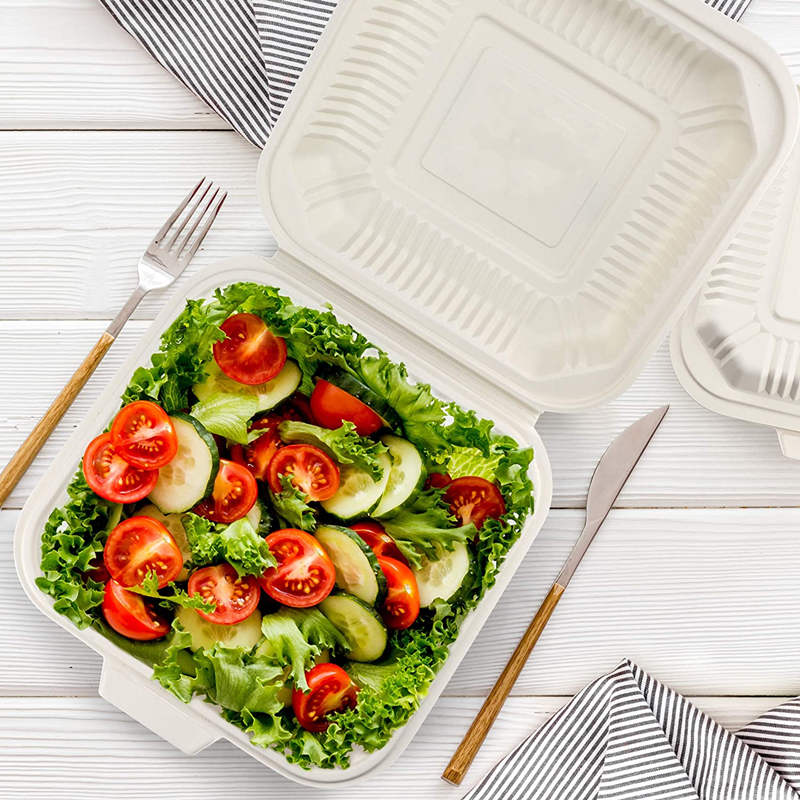✅ Introduction
Plastic waste is one of today’s most pressing environmental challenges. Businesses in the foodservice industry are under increasing pressure to adopt eco-friendly solutions due to global sustainability goals and local single-use plastic bans.
Enter corn starch packaging — a biodegradable, compostable alternative that meets both functional and environmental needs. This article explores what it is, how it works, key applications, and FAQs for businesses transitioning to greener options.
♻️ What Is Corn Starch Packaging?
Corn starch packaging is produced from natural starch extracted from corn kernels 🌽, blended with biodegradable components to create strong, heat-resistant containers and tableware. Unlike plastic, it composts within 3–6 months, leaving no toxic residue.
Key Features:
✅ 100% biodegradable and compostable
✅ Renewable raw material
✅ Heat-resistant (up to 110°C)
✅ Microwave-safe & food-contact certified
✅ Oil and moisture resistant
🍽️ Expanded Applications of Corn Starch Packaging
Corn starch packaging is now widely used across industries. Here’s where it’s making the biggest impact:
🍴 1. Catering & Large Events
Corporate conferences, weddings, outdoor festivals — event organizers now prefer corn starch plates, bowls, and cutlery to reduce plastic waste.
✔ Why it works: Elegant design, quick cleanup, eco-friendly branding.
👉 Explore Cornstarch Tableware

🥡 2. Restaurants & Take-Out Services
Restaurants and cafés are using corn starch hinged boxes and take-out containers for hot meals, pasta, and bakery products.
✔ Ideal for: Quick-service chains, fine dining with delivery, and fast-casual brands.
👉 Cornstarch Hinged Box | Take-Out Box

🚚 3. Food Delivery Platforms & Cloud Kitchens
With the surge in food delivery, platforms reward restaurants that adopt green packaging 🌱. Corn starch boxes provide leak resistance and maintain food quality during transit.
✈️ 4. Airlines & Rail Catering
Airlines and train services are replacing plastic trays and cutlery with corn starch bowls, plates, and utensils to meet sustainability goals without compromising food safety.
👉 Cornstarch Bowls

🏥 5. Hospitals, Schools & Institutions
Hospitals and schools require hygienic, disposable tableware that reduces contamination risks. Corn starch packaging offers a safe, eco-friendly alternative for high-volume food service.
🛒 6. Supermarkets & Retail Displays
Retailers and grocery stores use corn starch salad and light food boxes for ready-to-eat meals, salads, sushi, and fresh fruit.
👉 Cornstarch Salad Box

✅ Corn Starch vs Plastic vs Bagasse
| 🌍 Feature | Corn Starch 🌽 | Plastic 🛢️ | Bagasse 🌾 |
|---|---|---|---|
| Source | Corn-based | Petroleum-based | Sugarcane fiber |
| Biodegradable | Yes (3–6 months) | No | Yes (2–3 months) |
| Heat Resistance | ~110°C | ~120°C | ~100°C |
| Compostable | ✅ Yes | ❌ No | ✅ Yes |
❓ FAQ – Common Questions About Corn Starch Packaging
Q1: Can it be microwaved?
✅ Yes, safe for reheating food up to ~110°C. Avoid oven or direct flame.
Q2: How long does it take to degrade?
♻️ Around 3–6 months under industrial composting conditions.
Q3: Is it safe for food?
✅ Absolutely. Certified for FDA and EU food contact standards.
Q4: Does it work for oily foods?
✔ Yes, oil and water-resistant.
Q5: Can I recycle it?
❌ No, it is compostable (not recyclable). Dispose of in composting facilities.
🌍 About Xiamen Dashan
Xiamen Dashan is a trusted manufacturer of eco-friendly food packaging, offering corn starch tableware, hinged boxes, salad boxes, bowls, plates, and cutlery for global markets. All products meet international safety and sustainability standards.
✅ References
- European Bioplastics – https://www.european-bioplastics.org/bioplastics/
- UNEP – https://www.unep.org/plastic-pollution
- U.S. EPA – https://www.epa.gov/smm
- Food Packaging Forum – https://www.foodpackagingforum.org
- Bioplastics Magazine – https://www.bioplasticsmagazine.com/
- Packaging Insights – https://www.packaginginsights.com/
- ISO 18606 – https://www.iso.org/standard/63552.html
- Ellen MacArthur Foundation – https://ellenmacarthurfoundation.org/the-new-plastics-economy
